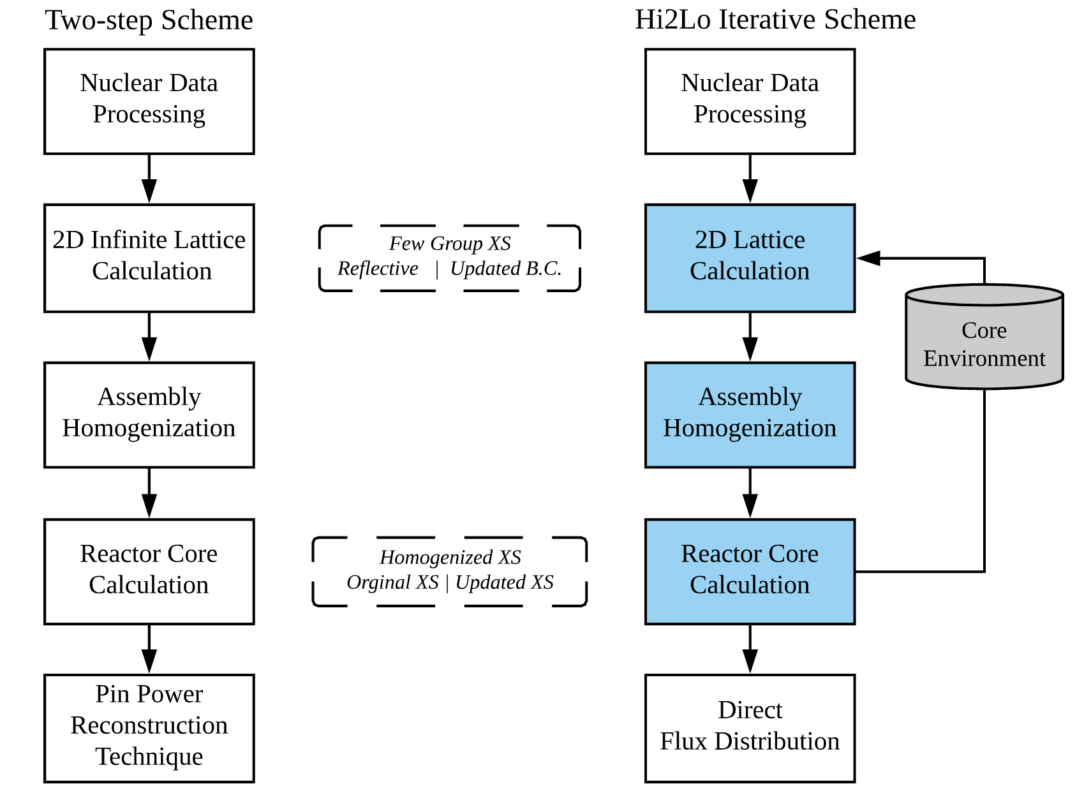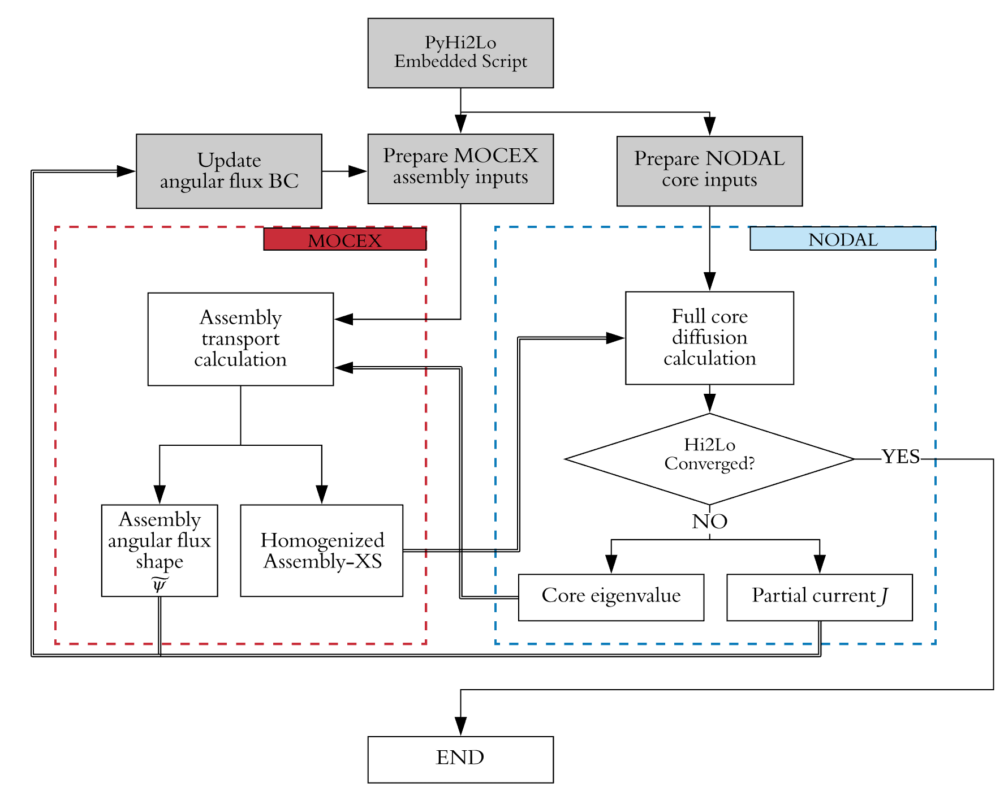Hi2Lo informing scheme for core neutronics calculations
ARDOR Lab member: Kan Ni, Jason hou
Collaborator: Maria Avramova (NCSU), Changho Lee (ANL)
Modern reactors designs with highly-heterogeneous core configurations demand increased fidelity and accuracy of reactor physics analysis, while the computational resources are still limited for whole-core high-fidelity transport calculations. The two-step method was originally developed to perform large-scale reactor calculations in an efficient way, while still maintaining a certain level of accuracy. This method is achieved through the homogenization of information, such as flux and cross-sections, in a relatively large spatial region such that reactor simulation could be conducted with reduced mesh numbers. This method is a double-edged method that alleviates the heavy load of full core transport calculation by applying approximations to the lattice calculation with a predetermined boundary condition instead of the boundary condition collected from the real core environment. However, the two-step method could be problematic when it is applied to more complicated and highly heterogeneous reactor designs. For example, large errors may emerge when one applies this method to the simulation of the reactor core with high burn-up and mix oxide fuel. This is partially due to the aforementioned infinite lattice approximation, which does not account for the actual inter-assembly interactions and thus deviates from actual heterogeneous core conditions.
This well-known issue motivates the High-to-Low (Hi2Lo) scheme, which enables the update of the boundary condition of lattice calculations. This approach usually includes iterative processes between the assembly and core calculation, in which the core calculation corrects the boundary condition for lattice calculations. Different from the one-time infinite lattice calculation, the local lattice calculation serves as an on-the-fly cross-section generator for the global calculation in the iteration process between the local and the global core nodal calculation.

In the Hi2Lo scheme under investigation, the transport code PROTEUS-MOC and nodal diffusion code PROTEUS-NODAL are used as the high-fidelity solver and low fidelity solver, respectively. PROTEUS-MOC has been modified with lattice physics code capabilities and serve as an online cross-section generator for the full core solver PROTEUS-NODAL. By feeding the actual core environment into lattice calculation, the algorithm is enabled by communicating between PROTEUS-MOC and PROTEUS-NODAL, and thus minimize the inconsistency in the equivalence parameters.

The Hi2Lo iterative scheme was conducted on the C5G7 benchmark as verification, results showed that the Hi2Lo scheme improved the result of keff, and assembly and pin power distribution compared with the two-step approach, while cutting ~40% wallclock time from the high-fidelity whole-core calculation.
References
- Ni, K., Hou, J., and Avramova, M. (2021). Development of a High-To-Low Informing Scheme for Core Neutronics Calculations Based on NEAMS Tools. The International Conference on Mathematics and Computational Methods Applied to Nuclear Science and Engineering (M&C 2021), Raleigh, United States, Oct 3 – 7.
- Ni, K., Hou, J., and Avramova, M. (2020). Implementation and Comparison of Lattice Module and Discontinuity Factors Module in PROTEUS Toolsets. Proceedings of PHYSOR 2020: Transition to a Scalable Nuclear Future, Cambridge, United Kingdom, Mar 29 – Apr 4.
